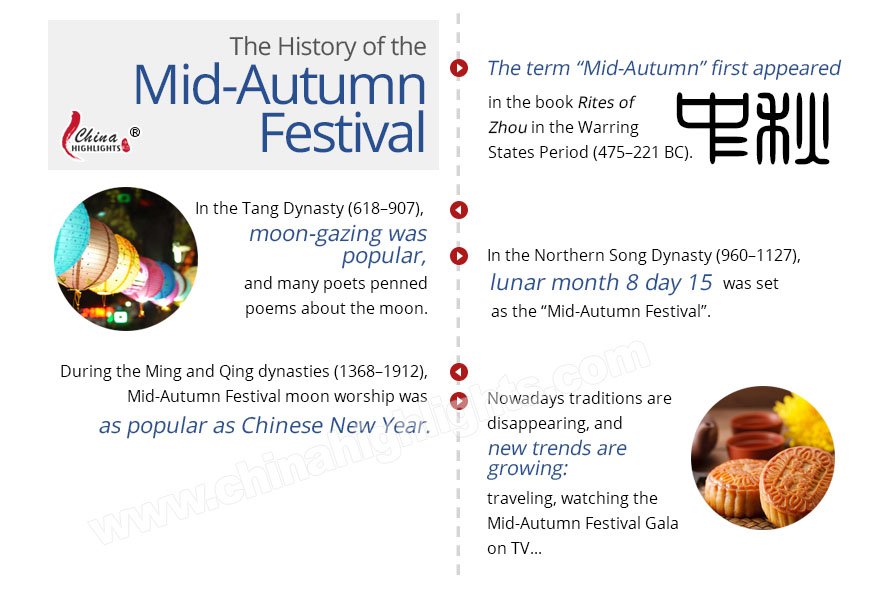

Popularity Peaked in the Ming and Qing Dynasties (1368 – 1912)ĭuring the Ming Dynasty (1368 – 1644 AD) and the Qing Dynasty (1644 – 1912 AD), the Mid-Autumn Festival was as popular as Chinese New Year.

However, it was only during the Warring States Era (475-221 BC) that this Festival was called Mid-Autumn because it was celebrated midway during the autumn season. Back during the Zhou Dynasty (1045-221 BC), moon worshiping ritual was practiced to pray for abundant harvests. Messages to rebel against the Mongols were passed around in mooncakes.ĥ. The Mid-Autumn Moon Festival has been celebrated by the Chinese since the 10th century B.C., and it has become. Originally, the Mid-Autumn Festival was celebrated to worship the moon. The tradition of eating mooncakes during the festival began in the Yuan Dynasty (1279 – 1368), a dynasty ruled by the Mongols.
#History of midautumn festival full#
According to this tale, if you look at the full moon, you will see his shadow sitting under a tree. Prominent amongst them is a story about a man named Cui who held tightly onto a magical banyan tree as it floated to the moon. Mooncakes Eaten from the Yuan Dynasty (1279 – 1368) History Although it originated in China, Vietnam has its own Mid-autumn Festival traditions. From then on, sacrificing to the moon was very popular, and has become a custom ever since. In the Northern Song Dynasty (960–1279 AD), the 15th day of the 8th lunar month was established as the "Mid-Autumn Festival". Became a Festival in the Song Dynasty (960 – 1279) Later in the Tang Dynasty, not just the rich merchants and officials, but also the common citizens, began appreciating the moon together.

During it, families reunite and celebrate with mooncakes and lanterns. The common citizens just prayed to the moon for a good harvest. Mid-Autumn Festival is a traditional Chinese festival held on the 15th day of the eighth lunar calendar month. Music and dances were also indispensable. They drank and appreciated the bright moon. In the Tang Dynasty (618 – 907 AD), appreciating the moon became popular among the upper class.įollowing the emperors, rich merchants and officials held big parties in their courts. The festival is held on the 15th day of the 8th month of the Chinese lunisolar calendar. Appreciating the moon with family during the Mid-Autumn Festival has been popular in China for hundreds of years. The history of the Mid-Autumn Festival dates back over 3,000 years.


 0 kommentar(er)
0 kommentar(er)
